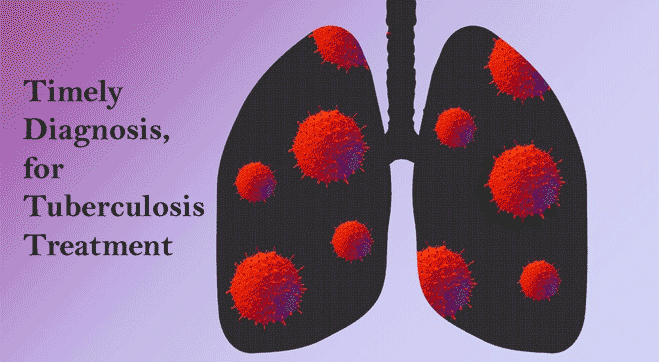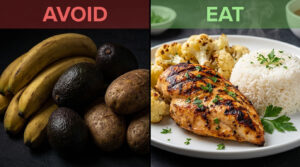A breath inhaled carrying the bacteria Mycobacterium Tuberculosis can slowly incubate and flourish in a weak body ensuing misery and anguish. The world is trying its best to lessen the burden of nations prey to this development stuttering hitch they are facing. But where are we standing today in the 21″ century when the country is marching towards being the best in every field? Are we being the best in saving ourselves from this bane? Or are we still letting TB claim our lives?
World Health Organization (WHO) have come up with visions that will assist nations in achieving “Goals”. One such vision towards a crucial goal with respect to TB and its perils, is ending TB by 2035′ and strategies are already in place to conquer the mark. According to WHO’s recent projections, the number of lives saved from TB since 2000 are 53 million with 22% drop in TB deaths’; but what still gives a pinch is to also see the score of over 1.4 million lives lost due to it.
A Global burden TB is the ninth leading cause of death worldwide. The prevalence of TB around the world is distributed such that of all the 10.4 million lives lost, 90% were adults, 65% particularly males and also including 10% coinfected with HIV. According to the WHO reports of 2016, 45% of the incident cases occurred in South East Asia, 25% in African region, 3% in European region and 3% in America. Of the five leading Asian countries, 56% cases of tuberculosis were from India, followed by Indonesia, China, the Philippines and Pakistan. As per reports the mortality rate of people developing TB around the world is around 16%.
Another facet of TB burden is Drugresistant tuberculosis which has been a persistent threat emerging from 2016. Around that period, 490,000 million cases of MDR-TB were accounted. Another 110,000 cases occurred of patients susceptible to isoniazid, however showing resistance to first-line antiTB drug rifampicin (RR-TB).
Burden in India Our fight against TB has been the longest, known since the ancient days, finding its place even in Indian Vedas and age old Ayurvedic literature. Post-independence the scope for treatment had turned better, allowing us to understand and treat the disease. So what is it that is still keeping us behind in advancing towards decreasing its impact on our land covered under its dark clouds? A recent WHO Global TB report states, India alone has 2.2 million cases, out of the global statistics of 8.6 million new cases of tuberculosis. Despite the control measures taken, the higher number is attributable to the country’s population. Emergence of mutated drug resistant strains further worsens the situation.
The Hindrance!
TB mainly affects the communities in regions that are poor or vulnerable and people living a marginalized
life. Along with this lie other intimidating challenges, such as weak and fragile health systems, undertrained
or inadequate human resources, financial constraints, emergence of serious co-epidemics like HIV, tobacco
use, and Diabetes in the affected. To add more to these conditions that pillar thriving of TB, the causative
bacteria itself comes up with a new face by becoming drug resistant (Multidrug resistant TB / MDR-TB) so
further becoming a yet critical challenge.
Resistant ones need a control!
M. tuberculosis has found a way to develop resistance towards drugs used to treat TB. Powerful drugs
like Rifampicin and Isoniazid are proving ineffective towards this blight making us face a great challenge
in its complete wipe out Reason for spread of MDR-TB are the chances of person-to-person transmission
and mismanagement of its treatment. The treatment involved in achieving a complete cure over the disease
is through a strict six-months long anti-TB drug regime. But what gives rise to drug resistance is either incorrect
use of the drug or use of ineffective formulations of drugs. Interruption or ceasing the treatment prematurely
can also contribute to drug resistance and also increases the chances of disease transmission.
MDR-TB is becoming difficult to manage in many countries and the number of treatment options available are minimal along with adverse side-effects. Moreover, the drugs so recommended also are less likely to be available at ease and if available, turn out to be expensive! A next level to the misery is “Extensively drug-resistant TB” or_XDR-TB a multidrug-resistant form unresponsive to more of the anti-TB drugs making the scope for complete cure still narrow. Currently, this new form of TB is reported in around 109 countries throughout the world with not much known prevalence in our country at present. Of the total MDR-TB cases, 9.5% reportedly exhibited XDR-TB in 2015 survey, thus worsening the outcome.
HIV/AIDS: A Fuel to the fire
Human Immunodeficiency Virus (HIV) the causative agent behind the most feared disease of the age – Acquired
Immunodeficiency Syndrome (AIDS) is again an obstacle in the way of TB eradication. Known to make the infected
individual immunocompromised, HIV/AIDS is nothing less than a bait for TB to creep in and thus both turning out
to be a fatal combination where one boosts another’s advance ment. An estimated risk for an HIV infected individual
to develop TB is almost 16-27 times more than the one without HIV infection. In fact, in the year 2015 alone it was
reported that of 10.4 million cases of TB worldwide 1.2 million cases were those among HIV patients. India is not far
in this combined affliction with almost 25% of deaths in people living with HIV (PLHIV) caused by TB. Early detection
and accurate provisions for antiretroviral and anti-TB treatment is the sole path to reduce the death rates in as
many cases possible.
How prepared are we?
Directly Observed Treatment Short-course or better known as DOTS is a treatment cum control strategy
recommended by the WHO and is being widely used as a part of Revised National TB Control Programme
(RNTCP) in our country. DOTS has been described using five important elements by WHO as follows
- Political commitment with increased and sustained financing.
- Case detection through quality-assured bacteriology,
- Standardized treatment, with supervision and patient support.
- An effective drug supply and management system.
- Monitoring and evaluation system, and impact measurement.
Having summarized on the implementation of DOTS for treatment of TB, the situation is not as planned throughout the Indian demography. Improvement in channels aiding financial support for overall management of the project and many critical aspects Use such as accurate healthcare DOTS workers, drug distribution, proper guidance in following the course without interruption, etc. are still required. Awareness about the disease with equal importance in rural and urban areas is also needed. This ultimately will contribute in addressing TB at a grassroot level and hence eventually lead to its complete eradication.
Ending the burden of TB is an aim and fighting it by early management, diagnosis and treatment is an approach. The question that impels for an answer, can help strategize a scheme to solve a problem. TB has been afflicting Stop mankind since centuries and TB we are slowly but definitely working towards the proposed action of ‘End of TB’. The question that needs to be pondered on and strived to find an answer is – when shall we celebrate our freedom from TB that prowl throughout our land? When shall we be victorious over TB?








